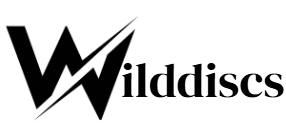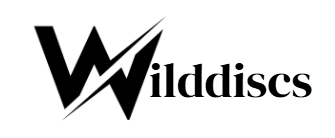In the evolving landscape of internet culture, much has been written about the mainstream platforms—Instagram, DeviantArt, Behance—that have become central nodes for artists seeking exposure and validation. Yet, beneath these highly visible layers lies a sprawling subterranean world of niche image boards and community-driven archives such as ffbooru, where fan art, underground aesthetics, and fringe visual cultures are not only preserved but actively cultivated. These spaces, often overlooked in academic discourse, serve as essential crucibles for digital subcultures and the aesthetics that define them.
The Structure of the Underground
At its core, ffbooru (a variation of the Danbooru-style booru engine used to catalog and tag images, particularly fan art) represents a kind of anarchic archiving—an imageboard where categorization and curation happen horizontally rather than hierarchically. Unlike mainstream platforms that rely on algorithmic visibility, these communities prioritize communal tagging, manual moderation, and deep searchability. What emerges is a decentralized repository where users share, critique, remix, and recontextualize works—many of which never see the light of day on more regulated or commercialized platforms.
Such environments foster what art theorist Nicolas Bourriaud might call relational aesthetics—where the artwork is less a product than a node in a social network. In this model, images do not function solely as finished pieces but as objects in conversation—part of a never-ending chain of influence, homage, subversion, and reinterpretation. The function of these images shifts from personal expression to cultural participation.
Fan Art as Folk Art
The content found on platforms like ffbooru heavily leans into fan art, often of obscure or underrepresented characters, genres, or media properties. This focus invites comparison to folk art traditions, wherein communities create and transmit works that reflect their collective experiences and values. Much like how quilting bees or zine collectives once operated, ffbooru acts as a digital atelier, where cultural capital is earned not through institutional endorsement but through consistency, style fluency, and intertextual savvy.
In this sense, ffbooru isn’t just a storage space—it’s an aesthetic engine, where artists hone highly specific visual languages that often reference and reinforce niche subgenres such as guro, mecha musume, or vaporwave. The persistence of these styles—and their resistance to mainstream sanitization—demonstrates the platform’s importance as a space where transgressive aesthetics can survive and evolve. It is here that the boundaries of “acceptable” taste are questioned, redefined, or outright ignored.
Tagging as Taxonomy
One of the more fascinating technical aspects of booru boards is the role of tags, which are applied to every uploaded image. Far from being a functional afterthought, this tagging system acts as a folksonomy—an organically evolving taxonomy created by the users themselves. Unlike academic art history, which relies on top-down classification systems, ffbooru’s tags reflect lived cultural fluency: “thighhighs,” “nosebleed,” “yandere,” “gritty reboot.” These micro-classifiers are aesthetic shorthand that encode complex visual motifs and narrative tropes into easily searchable terms.
In a way, the tagging system becomes its own meta-artwork—a collaborative act of meaning-making that archives not only images but the language of digital visual culture itself. Through this lens, imageboards like ffbooru function as vernacular museums—not institutions of authority, but archives of shared imagination.
Anonymity and Authorship
One of the defining characteristics of platforms like ffbooru is the ambiguous relationship between artist and audience. Many images are uploaded without credit, or under pseudonyms, resulting in a decoupling of art from authorial identity. This anonymity allows for a more fluid engagement with artwork, where images are judged by their affect and fluency within the community’s vernacular, rather than the reputation of their creators.
This stands in stark contrast to platforms like Instagram or ArtStation, where branding, personality, and follower counts often determine visibility. On ffbooru, artistic merit is measured in part by cultural accuracy—how well an image fits within the complex, evolving codes of fandom. In this way, the site becomes a post-authorship zone, where remix culture and collective authorship reign.
Gateways to the Avant-Garde
While it might seem paradoxical, platforms like ffbooru often function as incubators for avant-garde visual experimentation. Because they operate outside of commercial oversight and algorithmic moderation, they enable a level of visual risk-taking that is often sanitized out of more public-facing spaces. Artists can engage with taboo themes, nontraditional compositions, and unstable or contradictory aesthetics without fear of demonetization or deplatforming.
This “safe space for danger” makes niche boards vital to the evolution of internet art movements, many of which begin not with high-concept gallery pieces but with low-res fan art circulating in tightly knit circles. Just as early net.art in the 1990s used the constraints of the medium to push boundaries, today’s booru artists stretch the limits of digital illustration within community-defined standards of transgression and nuance.
The Fragility of the Archive
However, the influence of image boards like ffbooru is often underappreciated precisely because it is ephemeral. These platforms lack institutional support, are vulnerable to takedowns, and depend on small, passionate communities to maintain them. In a media landscape increasingly defined by platform consolidation, the potential disappearance of such sites represents not just a loss of artwork, but a rupture in the genealogy of internet aesthetics.
For scholars of visual culture and digital anthropology, this poses a challenge: How do we account for the underground architectures of fandom and art? How do we credit the uncredited, preserve the unstable, and validate the vernacular? These are pressing questions not just for archivists, but for anyone invested in the future of cultural expression online.
In conclusion, niche image boards like ffbooru are not simply digital dumping grounds for esoteric fan art—they are active sites of cultural production, experimental laboratories for aesthetic innovation, and communal spaces for participatory authorship. Their decentralized nature, anarchic archiving, and commitment to subcultural fluency position them as key players in the ongoing story of internet art. While their contributions may remain unseen by the mainstream, their impact—like the works they house—ripples outward in unexpected, often profound ways.


